Men And Women Had Equal Access To Resources 6,000 Years Ago
Conny Waters - AncientPages.com - An isotopic analysis conducted on ancient human remains indicates that men and women possessed equivalent access to resources approximately 6,000 years ago.
In orange, the location of the site of Barmaz, looking south. It is located on the plain, at the foot of the Chablais massif, which rises to an altitude of 2500 m. The site is divided into two contemporary burial areas named Barmaz I (dark blue) and Barmaz II (light blue) (Honegger and Desideri 2003, modified). Credit: Journal of Archaeological Science: Reports (2024). DOI: 10.1016/j.jasrep.2024.104585
Using isotope geochemistry, a team from the University of Geneva (UNIGE) has uncovered new information about the Barmaz necropolis in Valais (Switzerland): 14% of the people buried 6,000 years ago at this site were not locals.
This finding challenges the prevailing notion of gender-based disparities in resource allocation during that era and suggests a more egalitarian societal structure existed among the population under investigation.
This Middle Neolithic agropastoral society, recognized as one of the earliest known in the western region of Switzerland, exhibited a relatively egalitarian structure, a study says. The examined bones reveal that all members of the community, including people from elsewhere, had access to the same food resources.
The Neolithic era began with animal husbandry and agricultural practices. In Switzerland, this epoch spanned between 5500 BC and persisted until approximately 2200 BC. The first agropastoral communities gradually moved from a predatory economy—in which hunting and gathering provided the nutrients essential for survival—to a production economy.
The concentrations of specific isotopes of carbon, nitrogen, sulfur, and strontium are contingent upon the environmental context in which an individual lives and eats. The technique is being employed for the inaugural instance with alpine agropastoral populations originating from the Middle Neolithic era in the western region of Switzerland.
The Barmaz site at Collombey-Muraz in the Chablais region of Valais, Switzerland, is a significant archaeological discovery that sheds light on ancient agropastoral societies in the western part of the country. Excavations conducted in the 1950s and 1990s revealed two necropolises containing the skeletal remains of approximately seventy individuals. These human remains, among the oldest found in the region, provide valuable insights into the lives and practices of these early agricultural and pastoral communities.
The Barmaz site is an important source for studying the evolution of human settlements in this part of Switzerland.
For her master's thesis, Déborah Rosselet-Christ, the study’s primary author, meticulously selected 49 individuals, comprising an equal number of females and males. From these subjects, she methodically obtained collagen samples from specific bones, as well as enamel fragments from their second molars, in a systematic manner.
"The second molar is a tooth whose crown forms between the ages of three and eight," explains the researcher.
"Once formed, tooth enamel is not renewed for the rest of its life. Its chemical composition therefore reflects the environment in which its owner lived during childhood. Strontium (Sr) is a good marker of mobility. The ratio of abundance between two of its isotopes—i.e. their proportion—varies greatly depending on the age of the surrounding rocks. These chemical elements end up in the enamel via the food chain, leaving an indelible signature that is specific to each environment."
Analysis of the strontium isotope ratios in the 49 individuals from Barmaz reveals a high degree of homogeneity in most of them and markedly different values in only 14% of the samples, indicating a different origin.
"The technique makes it possible to determine that these are individuals who did not live the first years of their lives in the place where they were buried, but it is more difficult to determine where they come from," says Jocelyne Desideri, senior lecturer at the Laboratory of Archaeology of Africa and Anthropology in the UNIGE Faculty of Science, last author of the article.
"Our results show that people were on the move at that time. This comes as no surprise, as several studies have highlighted the same phenomenon in other places and at other times during the Neolithic period."
Written by Conny Waters - AncientPages.com Staff Writer
More From Ancient Pages
-
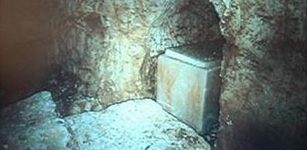 Controversial Ancient Tomb Could Prove The Existence Of Biblical Jonah
Archaeology | Mar 9, 2014
Controversial Ancient Tomb Could Prove The Existence Of Biblical Jonah
Archaeology | Mar 9, 2014 -
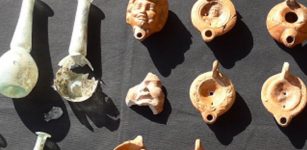 2,000-Year-Old Historical Tombs Unearthed In Close Vicinity To Ancient City Of Laodicea
Archaeology | Jan 23, 2020
2,000-Year-Old Historical Tombs Unearthed In Close Vicinity To Ancient City Of Laodicea
Archaeology | Jan 23, 2020 -
 Intriguing Discovery Could Offer Proof Of The Tabernacle – Has The Dwelling Place Of God Been Located?
Archaeology | Nov 9, 2013
Intriguing Discovery Could Offer Proof Of The Tabernacle – Has The Dwelling Place Of God Been Located?
Archaeology | Nov 9, 2013 -
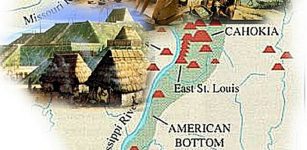 Unsolved Mysteries Of Cahokia – What Really Happened With The Large Metropolis?
Civilizations | Jan 15, 2015
Unsolved Mysteries Of Cahokia – What Really Happened With The Large Metropolis?
Civilizations | Jan 15, 2015 -
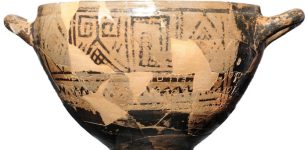 Mystery Of The Tomb Of Nestor’s Cup Unraveled
Archaeology | Oct 6, 2021
Mystery Of The Tomb Of Nestor’s Cup Unraveled
Archaeology | Oct 6, 2021 -
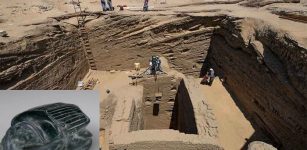 Unique Tomb Of Egyptian Commander Discovered In Abusir Sheds Light On ‘Globalisation’ In Ancient World
Archaeology | Jul 20, 2022
Unique Tomb Of Egyptian Commander Discovered In Abusir Sheds Light On ‘Globalisation’ In Ancient World
Archaeology | Jul 20, 2022 -
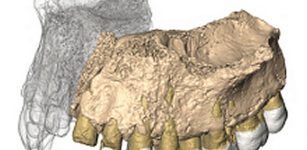 Earliest Modern Human Fossil Outside Africa Unearthed At Misliya Cave, Israel
Archaeology | Jan 27, 2018
Earliest Modern Human Fossil Outside Africa Unearthed At Misliya Cave, Israel
Archaeology | Jan 27, 2018 -
 Demise Of Cambodian City Angkor Caused By Decline In Occupation And Not Abrupt Collapse
Archaeology | Apr 18, 2019
Demise Of Cambodian City Angkor Caused By Decline In Occupation And Not Abrupt Collapse
Archaeology | Apr 18, 2019 -
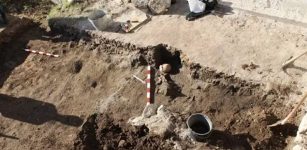 Medieval Grave And Skeleton With Arrow In Chest Unearthed In Ancient City Of Plovdiv, Bulgaria
Archaeology | Dec 28, 2017
Medieval Grave And Skeleton With Arrow In Chest Unearthed In Ancient City Of Plovdiv, Bulgaria
Archaeology | Dec 28, 2017 -
 Hydra Greek Monster: Fearsome Multi-Headed Dragon That Inhabited Swamps Of Lerna
Featured Stories | Sep 20, 2019
Hydra Greek Monster: Fearsome Multi-Headed Dragon That Inhabited Swamps Of Lerna
Featured Stories | Sep 20, 2019 -
 Ancient Miracle Man Possessed Extraordinary Levitation And Telepathic Abilities That Shocked People
Ancient Mysteries | Jun 21, 2018
Ancient Miracle Man Possessed Extraordinary Levitation And Telepathic Abilities That Shocked People
Ancient Mysteries | Jun 21, 2018 -
 Unique Purbeck Marble Found On England’s Oldest Historic Shipwreck
Archaeology | Jun 14, 2024
Unique Purbeck Marble Found On England’s Oldest Historic Shipwreck
Archaeology | Jun 14, 2024 -
 Ancient Egyptians Invented World’s Oldest Egg Ovens And They Are Still In Use
Ancient History Facts | Jul 6, 2021
Ancient Egyptians Invented World’s Oldest Egg Ovens And They Are Still In Use
Ancient History Facts | Jul 6, 2021 -
 No Evidence Ancient Caribbeans Were Cannibals – Scientists Say
Archaeology | Aug 23, 2021
No Evidence Ancient Caribbeans Were Cannibals – Scientists Say
Archaeology | Aug 23, 2021 -
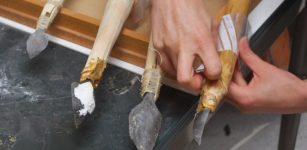 Oldest Known Spearthrowers Found At 31,000-Year-Old Archaeological Site Of Maisières-Canal
Archaeology | Nov 6, 2023
Oldest Known Spearthrowers Found At 31,000-Year-Old Archaeological Site Of Maisières-Canal
Archaeology | Nov 6, 2023 -
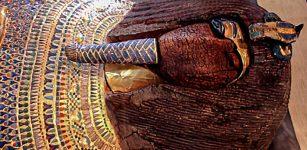 Dispute And Mystery: Strange Case Of The Tomb KV55 In The Valley Of Kings, Egypt
Civilizations | Oct 8, 2015
Dispute And Mystery: Strange Case Of The Tomb KV55 In The Valley Of Kings, Egypt
Civilizations | Oct 8, 2015 -
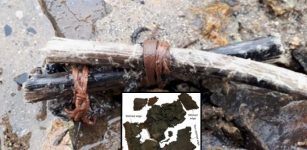 7,000-Year-Old Unique Artifacts Discovered Under Melting Ice In Canada
Archaeology | Nov 30, 2023
7,000-Year-Old Unique Artifacts Discovered Under Melting Ice In Canada
Archaeology | Nov 30, 2023 -
 On This Day In History: Remembering D-Day – On June 6, 1944
News | Jun 6, 2016
On This Day In History: Remembering D-Day – On June 6, 1944
News | Jun 6, 2016 -
 Ancient Societies Ruled By Ruthless Dictators – Collapsed
Civilizations | Oct 18, 2020
Ancient Societies Ruled By Ruthless Dictators – Collapsed
Civilizations | Oct 18, 2020 -
 Pre-Columbian Casarabe People In The Amazon Developed A Unique Drainage And Irrigation System
Archaeology | Jan 29, 2025
Pre-Columbian Casarabe People In The Amazon Developed A Unique Drainage And Irrigation System
Archaeology | Jan 29, 2025

